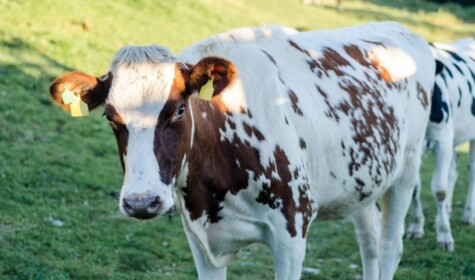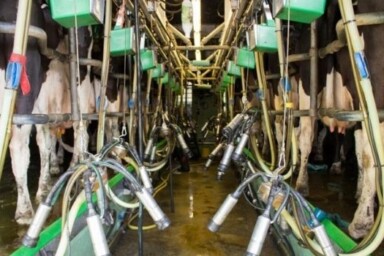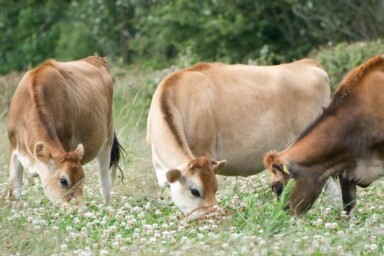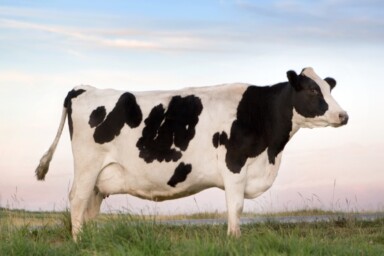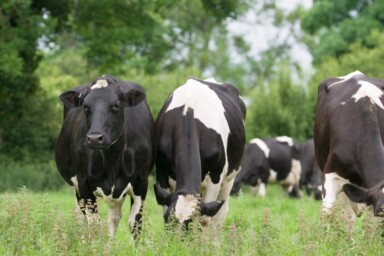The most recent turn in the UK dairy crisis is the rejection of milk by young people, replaced by alternatives such as soya or almond milk. David Dobbin, the chief executive of United Dairy Farmers has described this as a “demographic time bomb”. This consumer change goes hand-in-hand with the dramatic rise in veganism in the UK, which has risen from around 150,000 to at least 542,000 people in the last decade.
The dairy industry is now fighting back with a new sustainability framework that looks to tackle environmental challenges. Will this new system enable milk to become as ‘sustainable’ as its plant-based counterparts?
Environmentally friendly alternative?
The carbon footprint of the meat and dairy industry has become an increasingly hot topic over the last decade, particularly since the UN report, Livestock’s Long Shadow, was published in 2006. This report claimed that livestock was accountable for 18% of worldwide greenhouse gas emissions, though it has been subject to significant criticism for its accounting of this, with some arguing that it is fundamentally flawed. Since then, huge efforts have been made by various companies to develop more plant-based products, including Original Source and Ben and Jerry’s, who now have a vegan line. Alpro, which produces sustainable soya based products, claims that soya uses four times less water than milk, two times less land and produces two and a half times less CO2 emissions.
However, the eco-friendly veil of plant-based milk alternatives has disguised some damaging effects on the environment. The Dairy All-Party Parliamentary Group (APPG) report on dairy and public health highlights that the environmental cost of plant-based drinks is often misunderstood in comparison to cow’s milk. Sourcing ingredients such as soya or almond can often have a negative impact on the environment, for instance in the well-documented links between soybean production and deforestation and, also, almond cultivation in areas experiencing severe droughts such as California which produces 80% of the world’s almonds.
The Dairy APPG report claims that ingredients such as soybeans or almonds require different climatic and soil conditions than those found in the UK. The UK soya and almond milk market is therefore fuelled by crop imports. The UK imports around 50% of its soybeans from Brazil and 25% from the US. Soybean production not only incurs a huge environmental cost in transportation, but is also accountable for the destruction of 2.6 million hectares of Brazilian rainforest each year.*
Although Alpro emphasises that they source their ingredients for products sold in the UK as locally as possible, their almonds come from the Mediterranean and more than half of their soybeans from other European countries, which means that there is an environmental cost in transportation. On the other hand, the dairy industry is the single largest agricultural sector in the UK. It is also the tenth largest producer in the world and boasts a workforce that is 80,00 strong across the country.
Meeting the challenges
Massive steps are being undertaken to combat the environmental challenges faced by the dairy industry. The first global indicators of the Dairy Sustainability Framework (DSF) were launched earlier this month by the Global Dairy Agenda for Action (GDAA). In total, the DSF sets out eleven key environmental criteria, aimed at improving the dairy supply chain. These global indicators are greenhouse gas (GHG) emissions, which will follow the International Dairy Federation’s (IDF) methodology of Lifecycle Analysis, and Animal Care, which will use a Somatic Cell Count. The methodology used for GHG emissions will enable stakeholders across the industry to take a standardised approach to monitoring emissions across the supply chain. The Somatic Cell Count will help to draw an accurate depiction of the welfare of herds within the industry.
Dr Judith Bryans, the Chief Executive of Dairy UK, highlights that the term ‘sustainability’ applies to more than just environmental factors. She claims that a “comprehensive analysis can only be effective from contextualising the environmental impact of food groups alongside their role in other areas, including nutrition and economic impact.”
When discussing the disadvantages of the dairy industry, often indoor mega-dairies are cited as examples. It is important to differentiate between types of dairies, as smaller farms with grass-fed animals have huge societal and environmental value. The use of grassland is not only extremely important for biodiversity, but also in mitigating the impact of increased emissions through carbon sequestration.
The nutritional benefits of dairy have taken a public bashing recently, with many lifestyle and health gurus claiming that alternatives to milk are much better for us. Dr Bryans claims that there is a large, ever-growing body of science backing the health benefits of dairy, whilst the health benefits of milk substitutes are commonly supported by those with few credible credentials and a dearth of “traditional science.”
The varying arguments in relation to the health and environmental impact of milk versus its substitutes can be hard to unravel and can become a headache for consumers who are trying to do their bit for the environment. While it may seem logical that cutting cows out of ‘milk’ altogether means that the quantity of water, soil and GHG emissions is reduced, when trying to resolve the sustainability issue, there is a wider context to consider. Locality and regional geography must be an essential component of the sustainability equation. For a country that relies heavily on food and drink imports, it is important to support our agricultural industry by using what the land enables farmers to produce. Other home-grown milk alternatives, such as oat milk, are also available. With the dairy industry restructuring to become more sustainable, consumers can contribute to rural UK economies, whilst helping to support an industry that is becoming increasingly better for the environment.
*This article was amended on 13th and 31st January to remove an incorrect figure and amend a sentence in relation to the amount of soya fed to livestock. We realise the issue of soya used as livestock feed has not been addressed here and so our Policy Director, Richard Young, carried out some research on the issue, which can be read here.
